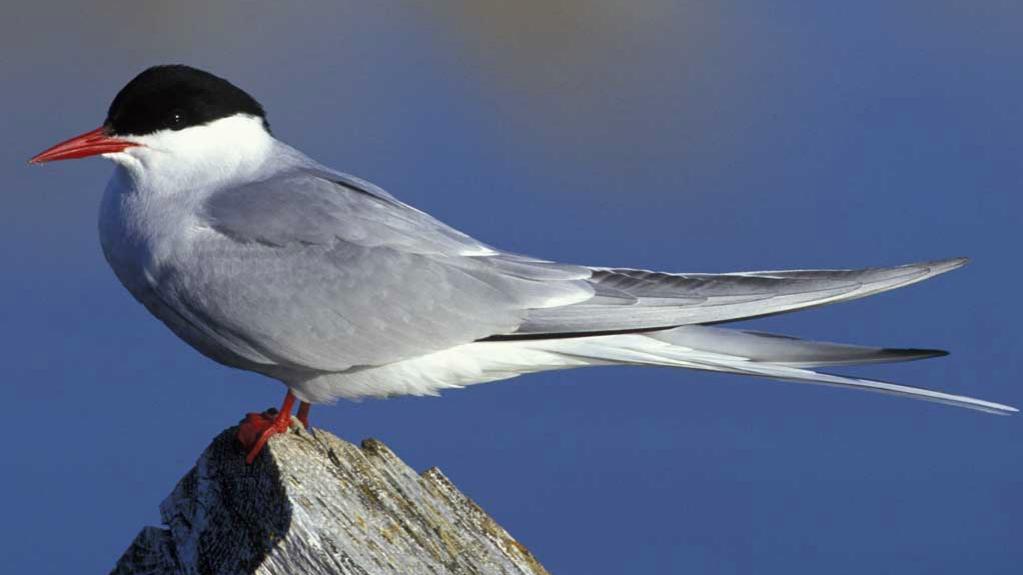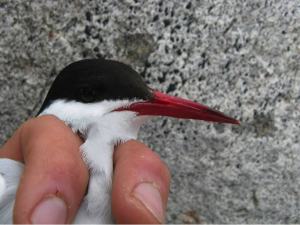Seal Island Research Supervisor Keenan Yakola was taking seabird census on the Project Puffin research island when he came across one of the more extraordinary finds!
“On June 21st 1986 a young Arctic Tern chick hatched on Matinicus Rock Island and was banded by researchers working with Project Puffin. After this young chick fledged at the end of July it followed its family and other Arctic Terns north to the waters off England and then south along the coast of Europe and over the waters of the Atlantic off the coast of Africa until reaching productive feeding grounds along the ice pack of Antarctica.
The Arctic Tern has the longest migration of any tern and it was a feat for this little tern to make it there. This was the last we knew of this little tern until this year on June 15th when it was captured on Seal Island. We were trapping Arctic Terns to better understand how individuals in the Gulf of Maine move between islands and to study the health of the population.
Once captured, unbanded birds receive a government issued bird band and birds that are already banded provide researchers with useful data. In the case of our little Arctic Tern chick banded on Matinicus Rock in 1986 we learned a lot! For instance, this bird is 29 years old, one of the oldest Arctic Terns ever recorded. The oldest was a 34-year-old bird that also bred along the coast of Maine. It has likely flown over 800,000 miles in its lifetime and it is possible that is has had 26 nests!
This little bird has seen a lot in its life and we hope to see it around the colony in years to come. It received a new band when it was captured: LA32. Good luck to our old friend!”




